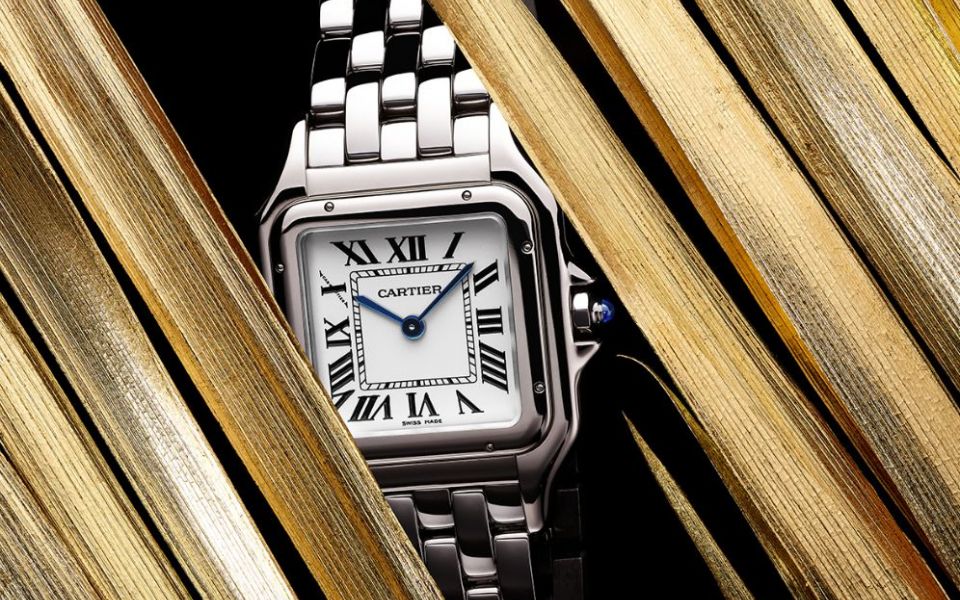
Celebrating 100 years of the Cartier Tank

Cartier Tank: 100 years on
This year Cartier celebrates the 100th anniversary of their iconic Tank watch.
In 1904, Louis Cartier created the first pilot wristwatch for aviator Alberto Santos-Dumont, namely the Santos-Dumont. Alberto complained to Louis Cartier that it was difficult for him to check his pocket watch whilst flying, so Cartier designed a wristwatch for him. In 1917, Cartier took inspiration from the then very new Renault tanks that were used at the front during WWI. Based on the design of the tank, Cartier created three versions of the recognisable wristwatch; the Tank Louis Cartier, the Tank Américaine and the Tank Française.
A maverick in his thinking, Cartier tapped into nascent design, which would soon become the foundations of the Art Deco style. Cartier created a rectangular watch with exposed screws on the bezel that mimicked mini rivets, although, the watch wasn’t entirely rectangular as the brancards are longer than the centre part of the case. Most Tank watches are noted for their Roman numerals, chemin de fer (the double line on the dial that represents the chapter ring) and the iconic winding crown with its sapphire cabochon. The Tank aesthetic was such a radical departure from the traditional round-shaped pocket watches that had reigned over the watchmaking landscape.
Like any evolutionary species, adapting to changing environments is the path to success. The Tank has undergone over 35 transformations over its 100 year life cycle while remaining true to its natural character. The first Tank transfiguration came in 1921 with the Tank Cintreé; an elongated and curvaceous piece designed to sit perfectly on the wrist. This was followed by the Tank Chinoise which captured the ever popular chinoiserie style of the Roaring Twenties.
The second metamorphosis occurred in 1922; the Tank Louis Cartier discarded some of its flatter features in favour of a softer, rounder finish. The Tank quickly progressed with the Tank à Guichets in 1928, the first of the series to incorporate a complication and include a digital time display with jumping hours and minutes. The next step forward for the Tank was a water-resistant edition and in 1931 Cartier advertised the Tank Étanche submerged in a beaker of water. The Tank has always been at the forefront of watchmaking it continually evolves with the times and remained unaffected by the 1970s quartz crisis. Its first centenary leaves any watch fanatic grateful for its creation and excited for the future of the Tank.
Tank in 2017
Tank Louis Cartier
This iconic wristwatch has come on leaps and bounds since its formation in 1922, but still features the famous brancards, a dial with Roman numerals and chemin de fer. The latest Louis Cartier is cut from stainless steel and is available in small and medium, set with diamonds and powered by a quartz movement.
Tank Américaine
Inspired by the Tank Cintreé the Américaine was first introduced in 1989, it was the first Tank that offered a curved water-resistant case and comes in small, medium and large with the choice of a quartz or automatic movement.
Tank Cintreé Skeleton
Based on the 1921 models, Cartier introduces two Cintreé Skeleton watches. In pink gold and platinum both feature the manual winding calibre 9917MC movement.
The transparent skeleton dial showcases the essential makings of a Tank; the hands and the chemin de fer.
At 100 years old, the Cartier Tank transcends time and remains one of the most iconic watches on the planet. Explore the Cartier collection here.